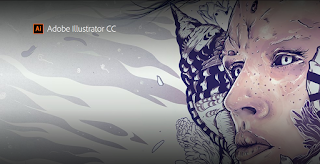Latest modern science | Link roundup for June 2015 - Si Bejo Science
link roundupThe self-declared contender for the best poster. Not just academic poster, no.
Yes, that tap at the bottom? It works.
Coverage of this poster can be found here, here, and here. Probably other places, too. Hat tip to Jeffrey Bemis.
Back to science now, with a blog post about posters for Twitter.
A reminder from Max Roser about why you should not use pie charts:
You will know the name from your font dropdown menus on your computer, all the way at the end: Zapf. An obituary of type designer Hermann Zapf is unexpectedly rich. Hat tip to Zach Seward and Amanda Krauss.
A poster! Hat tip to figshare.
A great look at science photographer Felise Frankel.
While posters are generally static, there�s a lot to think about in this interview about turning nanoscale bioloical processes into movies:
The Sociobiology blog has a post describing how to organize a fab small meeting. This particular meeting emphasized talks over posters, but I include it here anyway, since I am always hopeful conference organizers are lurking here.
Yes, that tap at the bottom? It works.
Coverage of this poster can be found here, here, and here. Probably other places, too. Hat tip to Jeffrey Bemis.
Back to science now, with a blog post about posters for Twitter.
This week on Twitter, I came across an image that was a hybrid between a science poster and an infographic. ... The simplicity of a tweetable poster makes it easy to highlight a project�s impact or identify solutions, and by sharing them on Twitter, the reach of these posters goes far beyond that of the traditional posters you find at conferences.
A reminder from Max Roser about why you should not use pie charts:
You will know the name from your font dropdown menus on your computer, all the way at the end: Zapf. An obituary of type designer Hermann Zapf is unexpectedly rich. Hat tip to Zach Seward and Amanda Krauss.
A poster! Hat tip to figshare.
A great look at science photographer Felise Frankel.
Frankel�s goal is to capture scientifically honest photographs that, in her words, �frankly, makes you want to look at it.� Since her first image ran on the cover of Science in 1992, her images have landed on some 30 journal covers.
While posters are generally static, there�s a lot to think about in this interview about turning nanoscale bioloical processes into movies:
In promoting the biomedical animations I should avoid overstating how accurately I have depicted the reality of the molecular world. It is vastly messier, random and crowded, and it�s physical nature is unimaginably alien to our normal perception of the world around us.
The Sociobiology blog has a post describing how to organize a fab small meeting. This particular meeting emphasized talks over posters, but I include it here anyway, since I am always hopeful conference organizers are lurking here.
































